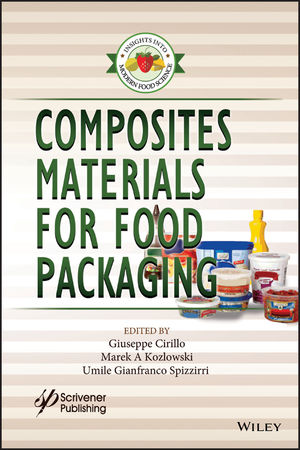Packaging news: Retortable plastic can wins DuPont kudos

Breakthroughs in higher heat thresholds for plastic packaging rate as noteworthy technical developments. Now those achievements are being recognized for their marketing impact, judging by the winning entries in this year's DuPont Awards for marketing and technical innovation.
Kid's Kitchen, Hormel Foods Corp.'s line of shelf-stable children's meals in all-plastic retortable containers, received the Diamond Award in this year's DuPont competition. It was selected over three other gold award winners in the food category and two nonfood gold winners. Judging criteria included degree of innovation, breadth of application, the packaging's significance to industry or consumers, marketing innovation of the product and the impact of the packaging on buying decisions.
Other gold awards in food went to a pasteurizable PET jar for Vlasic pickles (see November's Food Engineering), StarKist tuna in a retort pouch (February Food Engineering) and Cool Whip's squeeze dispenser pouch.
The spin-weld technology behind Hormel's product required entirely new packaging equipment. Silgan Container Corp. custom built the first units for Hormel, then tapped the Enabling Technology division of electronics giant Philips to build the servo-driven, 24-head packaging machines that can produce the containers at the 600-cans-per-minute clip needed for commercial application.
The science behind spin weld has existed since the late 1980s, but putting it together in a workable commercial model for food didn't occur until three years ago, according to Bill Heyn, general manager of Silgan's Omni Star division. The plastic lid rotates on a spindle at high speed and, when it comes in contact with the bowl, pressure and friction generate sufficient heat to weld the lid to the bowl. "Conceptually, it's the best way to put a plastic lid on a plastic bowl," says Heyn.
The sealed container handles a burst pressure of 60 to 80 psi, significantly higher than other plastic cans. No over-pressure is needed during the cooking process, though generally it is advisable during cooling.
A controller dictates how fast the servo motor rotates the lid, and a feedback loop monitors that performance 2,500 times a second. If performance deviates from the acceptable range, the container is automatically rejected prior to retorting. This quality assurance feature eliminates the need for leak detectors, tap tones and other quality checks traditionally used in canning.
Hormel has been testing the commercial viability of the all-plastic container for two years, slowly scaling up its three Kids Kitchen production facilities to replace packaging consisting of plastic bowls and metal pull-top ends. The easy-open, recyclable, microwave container doesn't have any sharp edges that could cut a child's hand. The 13-item line retails for about $1, the same as the plastic and metal units they are replacing.
A mechanical system with clutches and a rotary design is in place at Hormel. The machines' spindles rotate lids at up to 2,800 RPMs, with friction stopping the head when the weld is complete. Servo-driven machines with a racetrack layout are being installed at Ameriqual, an Evansville, Ind., copacker that is the second food processor to employ spin weld technology. The oblong design allows more time to pick up the lid and to perform the weld. Consequently, spindle speeds are reduced to 1,000 RPMs, and line speeds are more easily adjusted.
The Ameriqual unit handles containers up to 5 inches tall with 307 (3 and 7/16th inches) diameter lids.
While spin-weld is a technological achievement, the Cool Whip Squeeze pouch from Kraft Foods is a marketing triumph. "It suggests new uses, and the execution with the pouch's waist as a natural grab point helps it stand out on the freezer shelf," according to DuPont judge Diane B. Rooney, president of Rooney Consulting Group. The pouch resembles a baker's pastry bag and requires less-expensive materials than competing aerosol containers. More importantly, Rooney believes, is the package's ability to convey convenience, quality and greater product functionality to shoppers.
The Vlasic jar, created by Schmalbach-Lubeca Plastic Containers, is engineered with vacuum panels that withstand temperatures up to 215 degrees F, about 20 degrees higher than most PET containers. The lightweight jar replaces glass containers and is produced on the same production lines with minimal machinery modifications.
StarKist's multi-layer foil poach provides 18-month shelf life and requires less cook time at lower temperatures, resulting in a higher quality product. The HJ Heinz division's shift away from cans prompted competitors Bumble Bee and Chicken of the Sea to roll out their own versions of tuna in a pouch (see April's Food Engineering).

SIDEBAR:
Foil membrane cans win Cannex prizes
A barrel-shaped, multi-colored, retortable can from MIGOP of Egypt caught the fancy of judges at the recent Canmakers Summit 2001, winning a Cannex award. But the safety aspect of the can's closure was as much a part of its appeal as the visual. The MIGOP can won silver in the ends, caps and closures category. Another application of the foil membrane lid with an easy-pull tab won a gold award. Both containers rely on technology from Switzerland's Hans Rychiger AG to heat seal the membrane to the can.
Although embossing adds strength to the lid, containers that employ it require special handling during retorting and cooling. Despite those drawbacks, the seal is sufficient to deliver up to two years' shelf life while eliminating potential injuries from jagged openings.
Looking for a reprint of this article?
From high-res PDFs to custom plaques, order your copy today!







